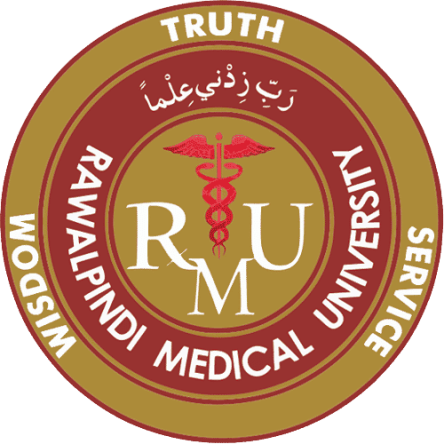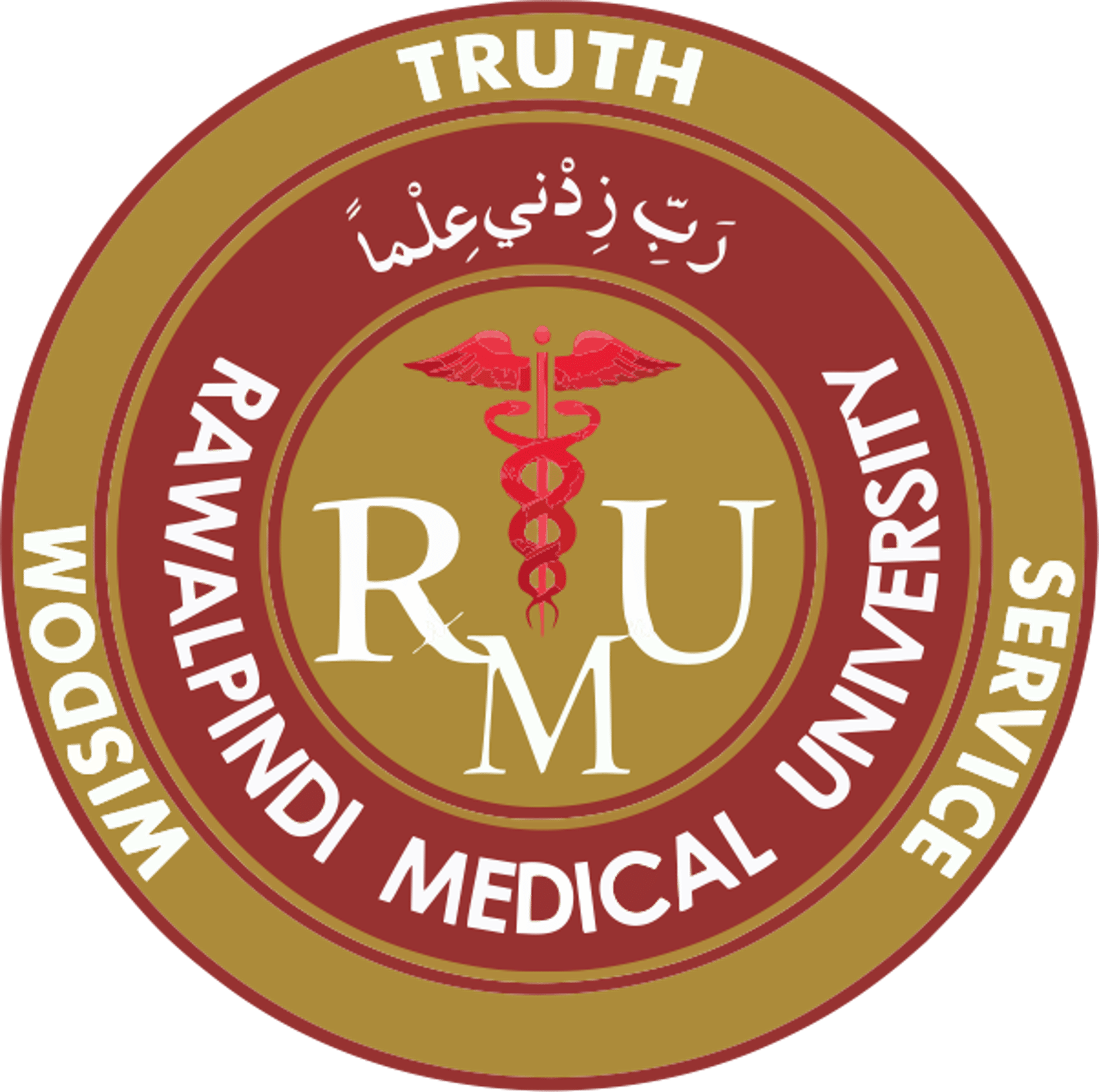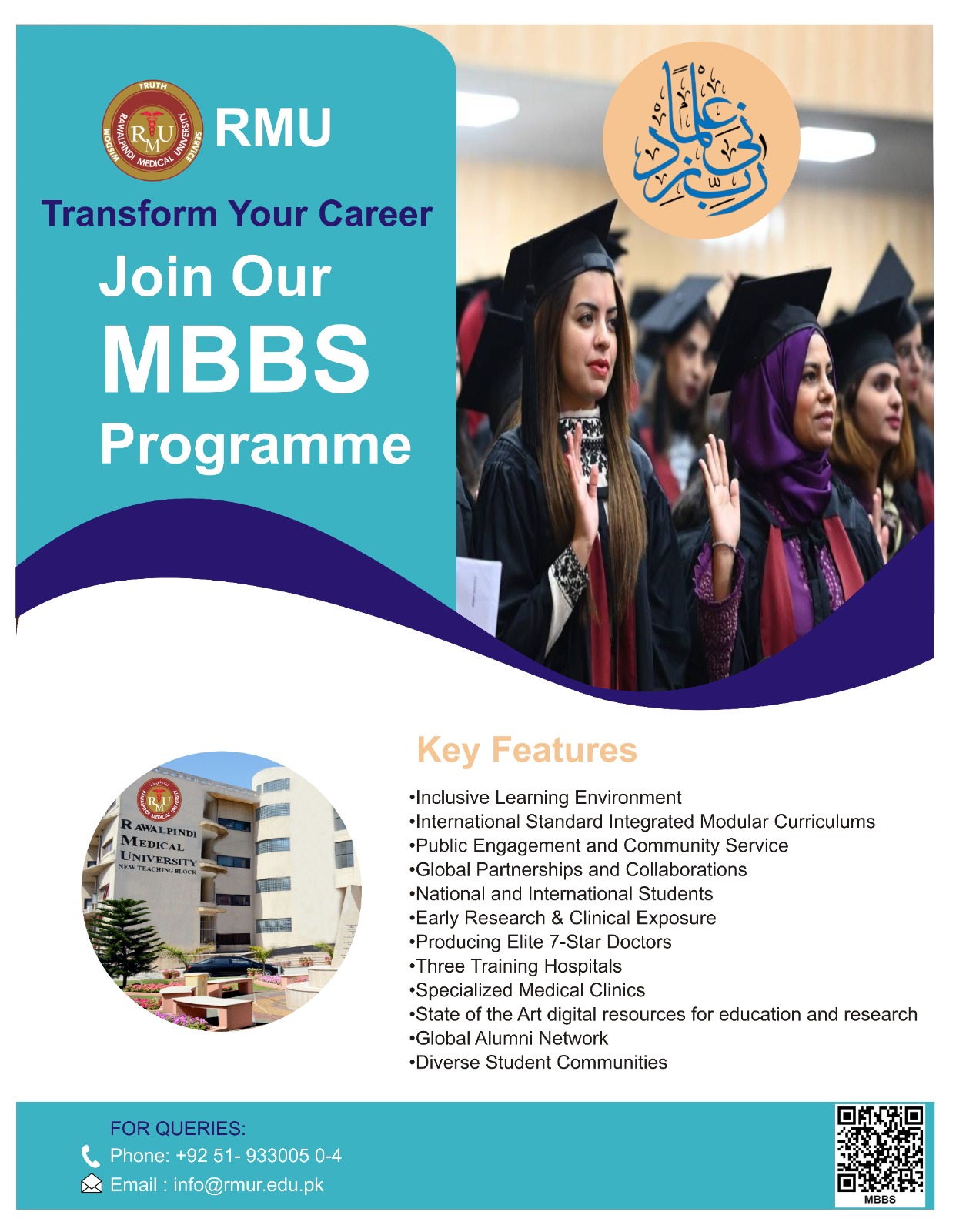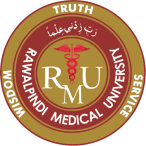
Overview of University
Infrastructure & Human Resource Development
One of the important challenges faced with the up-gradation of the Rawalpindi Medical College to the status of the university was the unavailability of the basic infrastructure required for the university including a separate university secretariat hosting the important components of the university life VC office, Registrar office, Examination cell, etc. Ensuring their availability was one of the primary requirements of the Higher Education Commission of Pakistan as per the guidelines published for the recognition of a university. Apart from the development of the basic university infrastructure, we were also required to revamp our human resources to fulfill the new responsibilities as well gear up for future challenges, including ever-increasing patient load in our attached tertiary care teaching hospitals. To meet the requirements of the regulatory bodies and our unshakeable commitment towards patient care required us to take immediate actions on was footings to build the required infrastructure and upgrade the human resource pool.
Play Video
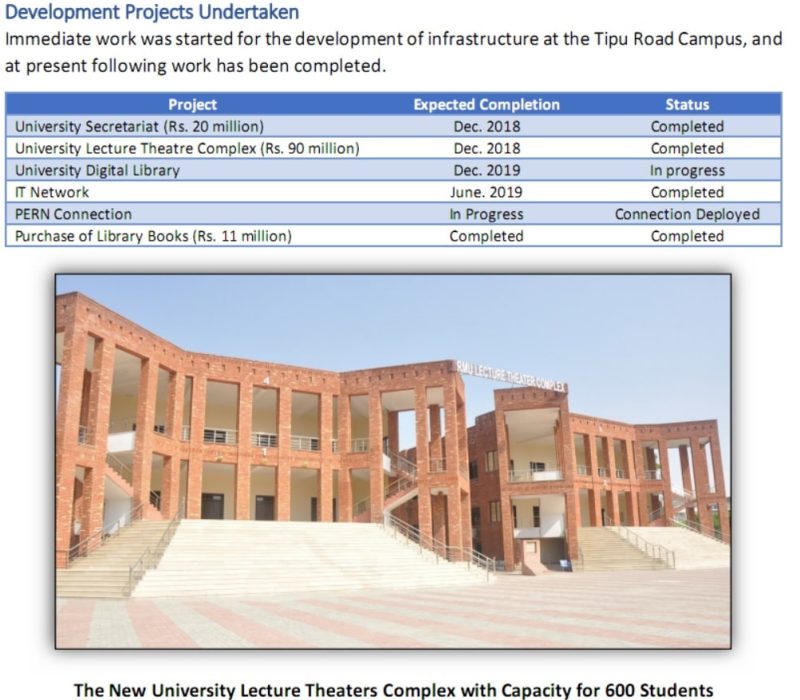
Lecture Theaters complex
Infrastructure Development at the RMU Tipu Road Campus
The Tipu road campus of the Rawalpindi Medical University has remained the hub of infrastructural development activities during the last two years with the development of the Vice Chancellor secretariat and majority of the vital university infrastructure there. Among the major components of the university infrastructure that have been developed there, the following are the notable one Secretariat Offices.
- These include the administrative offices including
- Office of the Vice Chancellor
- Offices of the Registrar section
- Offices of the Deans
- Offices of the Professors
- Syndicate Hall
- Deans Meeting Room
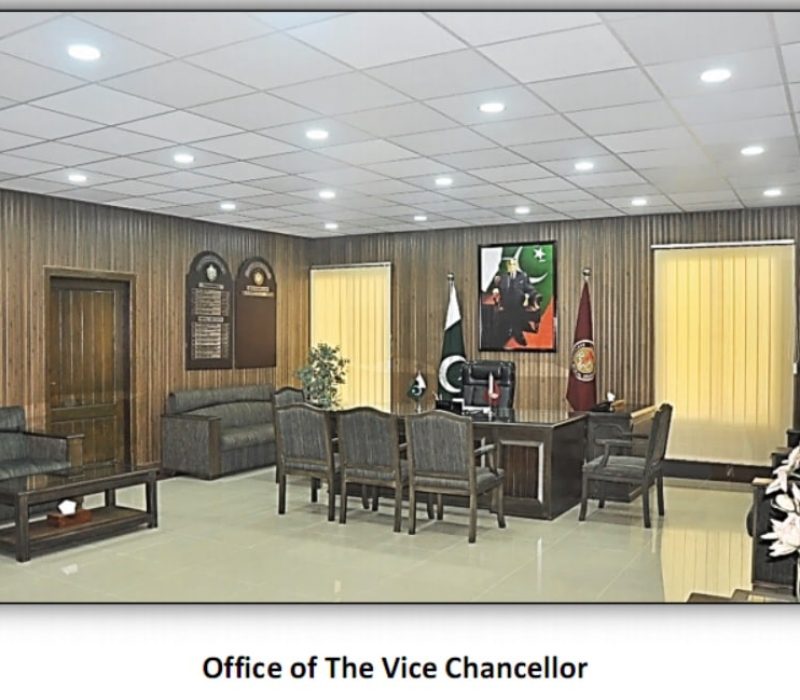
Office Of The Vice Chancellor

Examinations Department
Rawalpindi Medical University Campus has created a beautiful and healthy environment. The campus now boasts very beautiful lawns and flower beds which are regularly maintained and offer a very pleasant sight for all visitors and students.
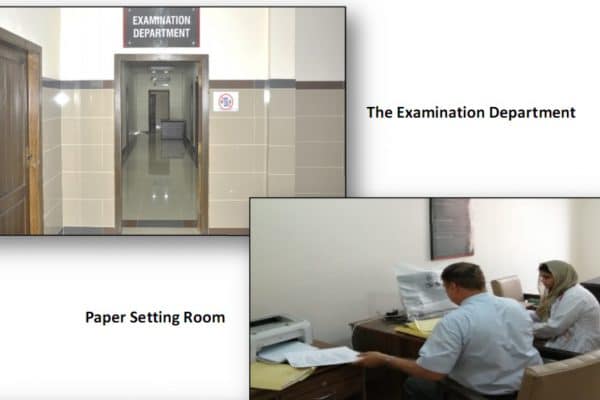
Horticultural Development Work
Rawalpindi Medical University Campus has created a beautiful and healthy environment. The campus now boasts very beautiful lawns and flower beds which are regularly maintained and offer a very pleasant sight for all visitors and students.

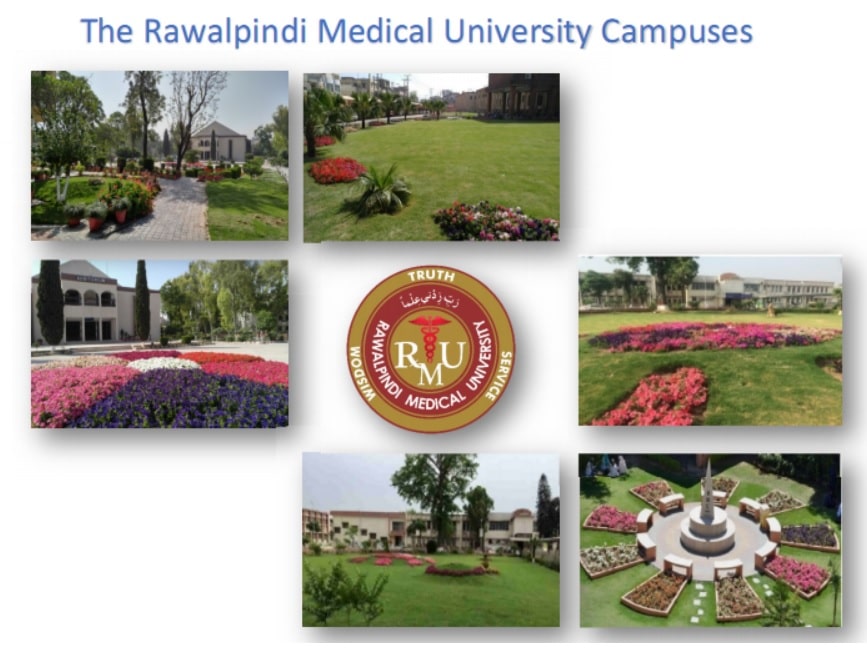
Horticultural Development Work
Punjab is the most populous province of the country with an estimated population of 101.4 million, and an area of 205,344 km2. It is the most literate provinces of Pakistan, with literacy rate reaching to 61% and 40% urbanization trend, stressing the importance of having quality educational institutions to cater to the needs of ever-increasing population.
Rawalpindi Medical University was established as Rawalpindi Medical College in 1974 and is one of the most renowned medical colleges, actively involved in the teaching of undergraduate MBBS students, and training and clinical teaching of M.Phil, M.S, M.D, FCPS & MCPS post-graduate trainees in 26 disciplines.
More than 12,000 students have graduated from the college to date. These include more than
600 foreign nationals. There are about 1500 Rawalians working in UK, USA, Australia and Gulf countries.
Students of Rawalpindi Medical University have not only been excellent academically but have also made us proud in extracurricular activities. We have a multitude of excellent athletes, debaters, poets, writers, and artists who have brought honor to the college by winning medals, colours and trophies.
There are three tertiary care hospitals attached to the Rawalpindi Medical University for clinical training namely Holy Family Hospital, Benazir Bhutto Hospital & District Headquarter Hospital with total bed strength of 3000. The hospitals prepare professionals equipped to deliver the highest quality of health care services. We have produced some of the country’s best medical graduates who have earned a name around the globe, not only for themselves but for their alma mater as well.
Accreditation from Regulatory Bodies
The RMU is determined to acquire required accreditations different governing bodies like
HEC & PMDC in record time. We have developed a whole set of teaching programs and they have also been submitted to the concerned quarters for scrutiny and recognition by the authorities prior to offering these programs to the public.

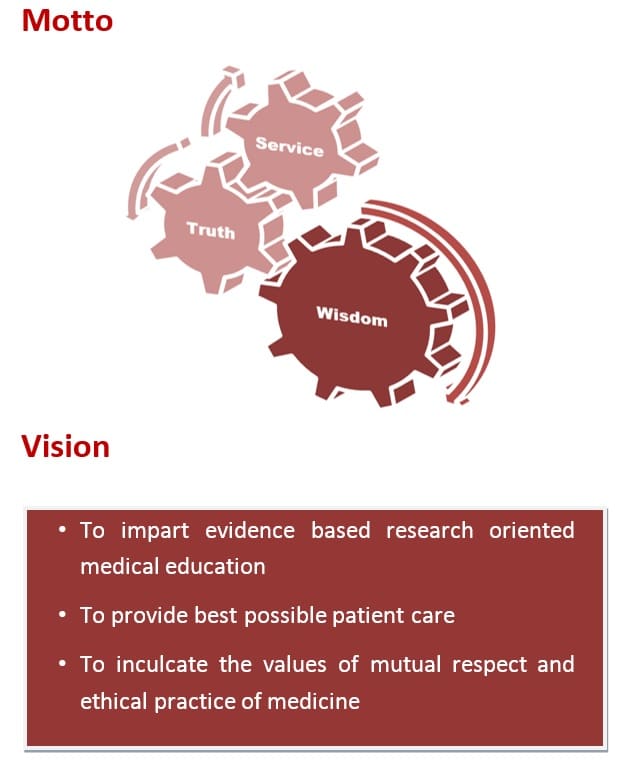
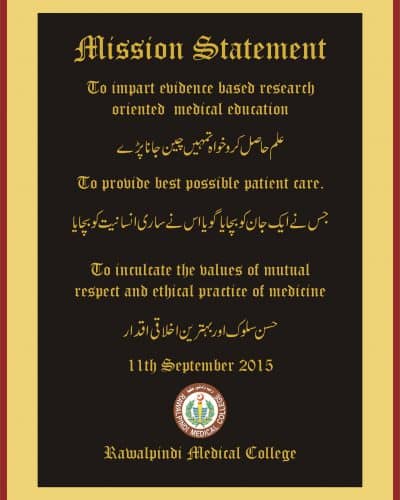
UNIVERSITY ORGANOGRAM

